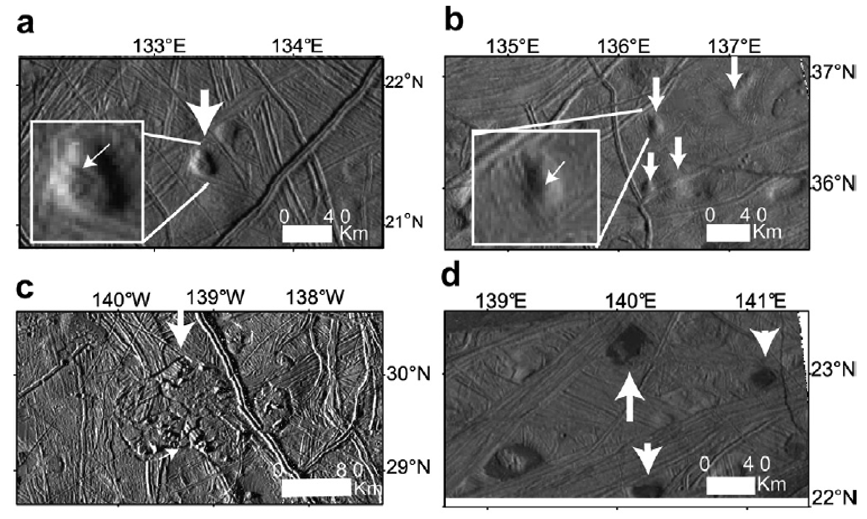This fall, professors Devon Burr and Josh Emery have been leading a seminar concerning everything Europa, putting this icy moon on the mind of a few BRIGHT members. As a result, our October 2nd group meeting involved discussion of the 2016 paper by Culha and Manga, “Geometry and spatial distribution of lenticulae on Europa“, led by Tony Maue.
Though criss-crossed with linear tectonic features, many rounded features also dot the Europan landscape. Lenticulae are small elliptical features distinguished by convex or concave topography, mostly low albedo, and their specific interactions with the crust. Culha and Manga’s work defines 5 types of lenticulae observed on Europa’s surface: pits (a), domes (b), chaos (c), spots (d), and the intermediate category dome/chaos. Due to their similar attributes and relative abundances, lenticulae are suggested to form successively from a to c. Cuhla and Manga measured geometric properties of these features including: spatial location, mean radius, aspect ratio, and orientation. Based on this analysis, the following 5 assertions were thus made:
- Pits & domes are similar size
- Chaos are larger than other lenticulae
- Pits are clustered in two quadrants while other features are more uniformly distributed
- Areal densities of lenticulae are not uniform
- Lenticulae do not divert the path of nearby ridges

Modified from Fig. 1 of Culha & Manga, 2016
For the relatively sparse data presently available for Europa, we thought the above authors made satisfactory statistical justifications for their conclusions. Fortunately, in the 2020s, Europa will be the center of a flagship NASA mission, with all kinds of bells and whistles that should revolutionize our understanding of this icy world.
One as-of-yet unanswered question concerns the formation mechanism for these features. While there are a number of suggested models, liquid water sills, rising diapirs, and brine mobilization are perhaps the most well supported thus far. Our group discussed possible future work in this area, with much mapping and analysis left to be done. For more information on lenticulae and their formation models, check out the relevant chapter in Europa:
Collins, G. & Nimmo, F. in Europa (eds Pappalardo, R. T., McKinnon, W. B. & Khurana, K. K.) 259–281 (Univ. Arizona Press, 2009).